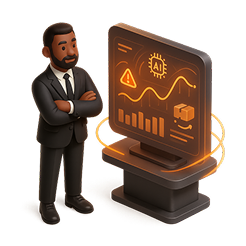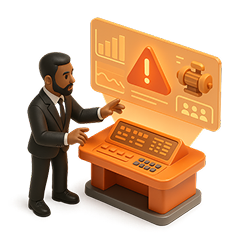A Friend, a Factory, and a Few Crores of Stock Doing Nothing
It started with a call from an old friend.
He said, "Prabhu, I think I need your help. My factory is doing great, except we have around five to six crores worth of stock just chilling in the warehouse."
I laughed and said, "Looks like your stock is working from home."
He didn't find that funny.
So I decided to visit.
When I reached, the place was buzzing — machines running, workers moving, trucks rolling in and out. He proudly gave me a tour, showing off the new line he'd just installed. Everything looked perfect until we entered the warehouse.
There it was. Mountains of raw material stacked neatly like a museum of missed opportunities. I asked, "Why aren't you using this?"
He shrugged, "We don't know what we already have. So every time we get a new order, we just buy again. Easier that way."
That's when I realized the problem wasn't in production, it was in visibility. The system didn't know what the factory already had.
We sat down over tea and some crispy samosas, and I told him,
"Let's make your system as smart as your machines."
Over the next few weeks, our team worked with his crew.
We connected inventory, production, and procurement into one dashboard.

Each department finally saw the same numbers in real time. No Excel sheets, no phone calls, just one version of truth everyone could act on.
We built forecasting tools that could predict material needs before an order even landed.

The system started learning from order history, seasonality, and vendor timelines. It began predicting shortages before they happened.
We added a camera-based safety monitor, because his supervisor once said, "We only notice issues when something goes wrong."

Now, cameras act like safety partners by spotting missing helmets, restricted-area access, or equipment downtime before it becomes a problem.
Now, his dashboard talks to him.
If a vendor delays delivery, alert.

An instant message goes to the procurement head before production even feels the impact.
If production slows, alert.

A red flag appears on the console, helping managers identify and fix the issue before targets slip.
If unused stock is piling up, big red alert.

The system highlights slow-moving materials and suggests where they can be reused or repurposed to free up capital.
The best part
He doesn't call me in panic anymore. He sends screenshots proudly showing how AI is running the factory smarter than ever.
Last week he said, "I used to chase my problems. Now the system chases them for me."
And that's when I smiled, because that's what good tech should do.
@SNC, we don't just automate businesses;
we give them a sense of humor, intelligence, and timing — all in one dashboard.
